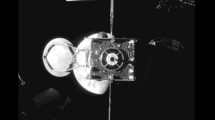
Kuva Space, a Finnish hyperspectral microsatellite and AI-driven insights company, has announced the conclusion of its Sunstorm CubeSat mission. The mission, which began under the European Space Agency’s (ESA) General Support Technology Programme (GSTP), ended on September 4, 2024, when the Sunstorm satellite re-entered Earth’s atmosphere at 10:30 EEST.
Launched in 2021, Sunstorm was a collaborative project between Kuva Space and Isaware. The satellite was equipped with an advanced X-ray Flux Monitor (XFM-CS) to monitor solar X-ray flares. The mission’s primary objective was to gather high-resolution data to enhance our understanding of solar eruptions and space weather phenomena.
Kuva Space served as the satellite platform provider, integrator and operator for the mission, while Isaware was responsible for developing and manufacturing the X-Ray Flux Monitor and processing the collected X-ray data.
Monitoring solar X-rays is essential for predicting space weather, a task that can only be performed from space. As reliance on electronic systems and satellites increases, Sunstorm has provided accuracy in space weather predictions, marking a significant milestone with its potential for commercial applications.
Throughout its three-year operation, Sunstorm surpassed expectations by delivering the most comprehensive and high-quality X-ray spectral data on solar flares to date. The mission, originally planned for two years, was extended due to the satellite’s exceptional performance, allowing for additional data collection and further enriching the dataset.
Janne Kuhno, co-founder and principal space engineer at Kuva Space, said: “We are extremely proud of the Sunstorm mission’s success. The data collected by Sunstorm over the past three years has been invaluable for space weather research and scientific studies of solar eruptions. This mission has set a new benchmark for solar X-ray observations.”
The mission was initially planned for two years but was extended by Kuva Space and Isaware due to the satellite’s continued performance. This extension allowed for additional data collection, further enriching the already significant dataset. Sunstorm has provided unprecedented insights into solar activity, which will continue to benefit the scientific community for years to come.
In addition to its primary mission, the success of XFM-CS on Sunstorm has paved the way for future missions. A version of the XFM is currently being developed under ESA’s Space Safety Programme for the National Oceanic and Atmospheric Administration’s (NOAA) Space Weather NEXT programme. This mission, scheduled for launch in 2029, will place the XFM instrument aboard an unnamed solar observatory at the Lagrange Point 1 (L1) of the Sun-Earth system. This instrument will be based on the technology successfully proven with XFM-CS but includes two detectors of different sensitivities, which will further improve its performance, particularly during extremely low or high levels of solar activity.
For Kuva Space, the mission set the precedent in how CubeSats are transitioning from high-risk proof-of-concept missions to fully operational high-availability monitoring campaigns with usable scientific data. The mission reaffirms the company’s capability in launching and operating CubeSats that deliver scientific-grade data.
Juhani Huovelin, Principal Investigator of the XFM-CS, added: “Sunstorm’s performance and the quality of the data collected have been outstanding. This mission has not only achieved its objectives but has also laid the groundwork for future advancements in space weather monitoring. We look forward to seeing the continued impact of the Sunstorm mission in the years to come.”
Kuva Space successfully launched its Hyperfield-1 satellite in August 2024, marking the initial stage of Kuva Space’s large hyperspectral constellation, which aims to provide daily observation by 2027 and gapless subdaily global monitoring with 100 satellites by 2030. Its second hyperspectral satellite, Hyperfield-1B, will be deployed in Q1 2025 as part of the ESA InCubed programme.














Add Comment